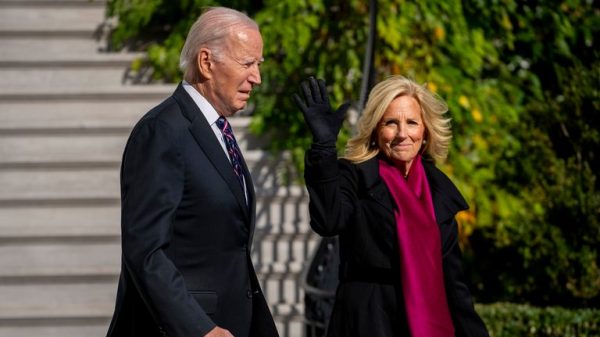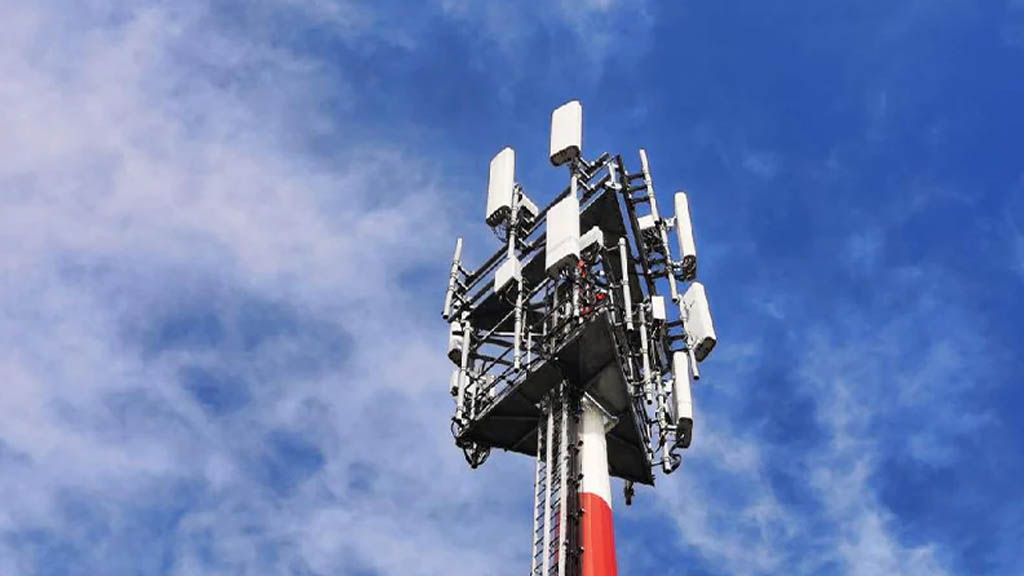In the years following the Trump administration’s decision to blacklist Huawei, the United States has grappled with the complex and costly task of disentangling its communications infrastructure from the Chinese tech giant. This initiative, dubbed the “rip and replace” programme, was designed to remove and replace Huawei equipment from U.S. networks due to concerns over national security. However, recent reports reveal that progress has been staggeringly slow, with only 12% of the companies participating in the Federal Communications Commission’s (FCC) programme having completed their work. The slow pace is symptomatic of the broader struggle within the U.S. government and military to fully implement a ban on Huawei connections.
The Origins of the Huawei Ban
The U.S. government’s concerns about Huawei stem from its close ties to the Chinese government and military, raising fears that the company could be coerced into spying on behalf of Beijing. These concerns are compounded by China’s National Intelligence Law, which requires Chinese companies to cooperate with state intelligence efforts. Although Huawei has repeatedly denied any involvement in espionage, the U.S. and several of its allies have moved to restrict the company’s access to critical infrastructure.
In 2019, the U.S. took the bold step of adding Huawei to its Entity List, effectively banning American companies from doing business with the firm without a special licence. The move was a clear signal of the deepening rift between Washington and Beijing, and it set the stage for the “rip and replace” mandate that followed.
Huawei’s Contributions to Global Technology
Despite the security concerns raised by the U.S. government, Huawei has made significant contributions to the global telecommunications industry. The company is a leader in 5G technology, providing advanced infrastructure at competitive prices. Huawei’s innovations have driven down the cost of building and maintaining high-speed networks, particularly in developing countries where affordability is a key factor in expanding digital access.
Huawei’s technology is often praised for its reliability and efficiency. Many rural telecom providers in the U.S. chose Huawei equipment because it offered a cost-effective solution that performed well in challenging environments. These providers argue that the company’s products helped them bridge the digital divide in areas where large telecoms were unwilling to invest. The cost of replacing this equipment is not just financial; it also involves potential service disruptions in underserved regions.
In addition to its role in telecommunications, Huawei has invested heavily in research and development, particularly in the fields of artificial intelligence, cloud computing, and semiconductors. These investments have not only bolstered Huawei’s competitiveness but have also contributed to the global tech ecosystem, driving innovation and creating new opportunities for collaboration.
The FCC’s ‘Rip and Replace’ Program: A Slow March Forward
The FCC’s “rip and replace” program was introduced in 2020 to help small and rural telecom providers remove Huawei (and ZTE) equipment from their networks. Congress allocated $1.9 billion to the program, with the intention of reimbursing these providers for the costs associated with replacing the Chinese-made gear. Despite the seemingly straightforward nature of this mandate, the programme has encountered significant roadblocks.
As of mid-2024, only 12% of participating companies have completed the removal and replacement of Huawei equipment. Several factors have contributed to this sluggish pace. First and foremost is the sheer scale and complexity of the task. For many rural telecom providers, Huawei equipment has been a cornerstone of their networks for years, offering a cost-effective solution in areas where margins are thin. Replacing this equipment is not only expensive but also disruptive to service, which can be a significant concern in regions where connectivity is already limited.
Moreover, the COVID-19 pandemic further complicated matters, causing delays in supply chains and increasing the cost of labour and materials. The logistical challenges have been exacerbated by the global semiconductor shortage, which has made it difficult for companies to acquire the necessary components to replace Huawei equipment.
The Military’s Struggle with Huawei
The slow progress of the “rip and replace” program is mirrored by the U.S. military’s ongoing challenges in implementing a full ban on connections to Huawei and its supporters. The military’s concerns are even more acute than those of civilian telecom providers, given the potential implications for national security. Yet, despite these concerns, the Department of Defence (DoD) has found it difficult to ensure that no part of its vast and complex supply chain is linked to Huawei.
One of the major issues is the ubiquity of Huawei technology. For years, the company has been a leading provider of telecommunications equipment, not just in the United States but around the world. This widespread presence means that Huawei components, or components from its subsidiaries and affiliates, can be found in various systems and products, often without the knowledge of the end-user.
Another challenge is the decentralised nature of the U.S. military’s procurement processes. With multiple branches and countless contractors involved in supplying equipment and services to the military, ensuring compliance with the ban on Huawei is a daunting task. While the DoD has issued guidance to contractors and suppliers, enforcing these rules has proven difficult. In some cases, contractors may not even be aware that they are using Huawei technology, particularly if it is embedded in larger systems or sourced through third parties.
Moreover, the military’s reliance on legacy systems presents another hurdle. Some of these systems, particularly those used in remote or specialised applications, may still rely on Huawei technology because there are few viable alternatives. The process of identifying, replacing, and certifying new equipment is time-consuming and costly, and in some cases, it may not even be feasible without compromising the operational capabilities of the military.
The Disadvantages of Banning Huawei from the U.S. Military
While the U.S. government’s concerns about Huawei are rooted in national security, there are several disadvantages to the blanket ban on the company’s technology within the military. One of the most significant is the potential loss of access to cutting-edge technology at competitive prices. Huawei’s 5G equipment, for example, is considered by many in the industry to be among the best in the world. By excluding Huawei, the U.S. military may have to rely on more expensive or less advanced alternatives, which could impact the overall efficiency and effectiveness of its communications networks.
Another concern is the disruption caused by replacing Huawei technology. In some cases, this could mean that critical systems are taken offline or that military operations are temporarily hindered while new equipment is installed and tested. In environments where reliability and continuity are paramount, these disruptions could pose significant risks.
Furthermore, the ban on Huawei may limit the military’s ability to collaborate with international partners who continue to use Huawei technology. This could create compatibility issues in joint operations or intelligence-sharing activities, potentially undermining the effectiveness of U.S. military alliances.
Finally, the focus on Huawei could divert attention and resources away from other, potentially more significant, cybersecurity threats. The U.S. military must contend with a wide range of challenges, from state-sponsored cyberattacks to vulnerabilities in commercial off-the-shelf technology. By concentrating too narrowly on Huawei, there is a risk of overlooking other critical areas that require attention.
The Road Ahead
The slow progress in removing Huawei from U.S. networks and military systems underscores the broader challenges the U.S. faces in reducing its dependence on Chinese technology. While the political will to sever ties with Huawei is strong, the practicalities of doing so are far more complex.
In the short term, the U.S. government may need to provide additional funding and resources to accelerate the “rip and replace” programme. The initial $1.9 billion allocation, while substantial, may not be sufficient to cover the full costs of replacing Huawei equipment, particularly given the inflationary pressures and supply chain disruptions that have emerged since the program’s inception. Additionally, more aggressive enforcement measures may be necessary to ensure that telecom providers comply with the mandate in a timely manner.
For the military, a more comprehensive approach may be needed to root out Huawei technology from its supply chains. This could involve closer collaboration with allies and partners to develop secure, alternative technologies and supply chains, as well as more stringent oversight of contractors and suppliers. The DoD may also need to invest in new research and development efforts to create homegrown solutions that can replace Huawei’s technology in specialised applications.
However, it is also important to weigh the benefits of Huawei’s technology against the risks. In some cases, it may be more pragmatic to maintain certain Huawei systems while implementing robust safeguards to mitigate potential security threats. This could allow the military to continue leveraging advanced technology while minimising disruption and cost.
The U.S.’s slow progress in moving away from Huawei highlights the complexities and challenges of disentangling from a globalised technology ecosystem. While the “rip and replace” programme and the military’s efforts to ban Huawei connections are important steps, they are only the beginning. As the U.S. continues to navigate the geopolitical tensions with China, it will need to find ways to build a more secure and self-reliant technological future. However, in doing so, it must also consider the potential advantages of maintaining access to Huawei’s technology and the disadvantages of a total ban. Finding a balanced approach that addresses security concerns while preserving technological capabilities will be critical to the U.S.’s success in this endeavour.






















